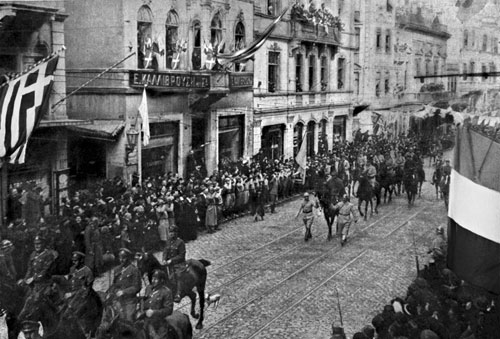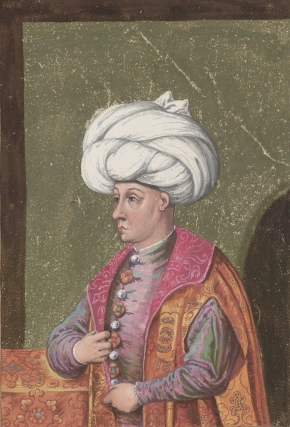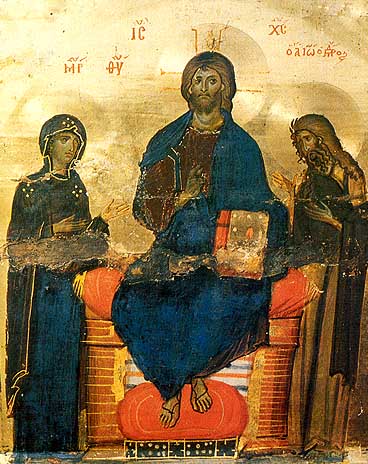|
Altıntaş
Altıntaş is a town in Kütahya Province in the Aegean Region, Turkey, Aegean region of Turkey. It is the seat of Altıntaş District.İlçe Belediyesi Turkey Civil Administration Departments Inventory. Retrieved 22 May 2023. Its population is 5,258 (2022). History Altıntaş was previously known as "Kurtköy". The district's name means "goldstone" in Turkish and was given due to the large stone deposits, especially marble deposits in the area. Chalcolithic artifacts have been found in the Altıntaş area. The Roman city of Soa (ancient city), Soa is located within the district boundaries. The marble in the area was mined in antiquity, having been used in the construction of the ancient city of Aizanoi nearby. Near today's Pınarcık, Altıntaş, P� ...[...More Info...] [...Related Items...] OR: [Wikipedia] [Google] [Baidu] |
Altıntaş District
Altıntaş District is a Districts of Turkey, district of the Kütahya Province of Turkey. Its seat is the town of Altıntaş.İlçe Belediyesi Turkey Civil Administration Departments Inventory. Retrieved 22 May 2023. Its area is 941 km2, and its population is 15,018 (2022). Composition There is one municipality in Altıntaş District: * Altıntaş There are 35 villages of Turkey, villages in Altıntaş District:Turkey Civil Administration Departments Inventory. Retrieved 22 May 2023. [...More Info...] [...Related Items...] OR: [Wikipedia] [Google] [Baidu] |
Soa (ancient City) in Asiatic Turkey.
Soa was a town of ancient Phrygia, inhabited in Roman and Byzantine times. Its name does not occur in ancient authors, but is inferred from epigraphic and other evidence. Its site is located near Altıntaş Altıntaş is a town in Kütahya Province in the Aegean Region, Turkey, Aegean region of Turkey. It is the seat of Altıntaş District. References Populated places in Phrygia Former populated places in Turkey[...More Info...] [...Related Items...] OR: [Wikipedia] [Google] [Baidu] |
Kütahya Province
Kütahya Province () is a Provinces of Turkey, province in the Aegean Region, Aegean region of Turkey. Its area is 11,634 km2, and its population is 580,701 (2022). In 1990, Kütahya had a population of 578,000. The neighboring provinces are Bursa Province, Bursa to the northwest, Bilecik Province, Bilecik to the northeast, Eskişehir Province, Eskişehir to the east, Afyonkarahisar Province, Afyon to the southeast, Uşak Province, Usak to the south, Manisa Province, Manisa to the southwest and Balıkesir Province, Balıkesir to the west. The capital city of the province is Kütahya. History Early Bronze Kütahya’s history extends as far back to the years 3000 BC, although the specific date of its establishment is unknown. According to old sources, Kütahya’s name during the ancient eras was recorded as Kotiaeon, Cotiaeum and Koti. Late Bronze During the Late Bronze, this region eventually became dominated by the Hittite Empire (c. 1320 BC). Iron Age The Phrygians ... [...More Info...] [...Related Items...] OR: [Wikipedia] [Google] [Baidu] |
Kütahya Location Altıntaş
Kütahya (; historically, Cotyaeum or Kotyaion; Greek: Κοτύαιον) is a city in western Turkey which lies on the Porsuk River, at 969 metres above sea level. It is the seat of Kütahya Province and Kütahya District.İl Belediyesi Turkey Civil Administration Departments Inventory. Retrieved 22 May 2023. Its population is 263,863 (2022). The region of Kütahya has large areas of gentle slopes with agricultural land culminating in high mountain ridges to the north and west. History Ancient Although the exact date of its establishment cannot be determined, its history dates back to 3000 BC. According to old sources, the ancient name of Kütahya was Kotiaeon, Cotiaeum and Koti. In the Iron Age the province was settled by the |
Byzantine Empire
The Byzantine Empire, also known as the Eastern Roman Empire, was the continuation of the Roman Empire centred on Constantinople during late antiquity and the Middle Ages. Having survived History of the Roman Empire, the events that caused the fall of the Western Roman Empire in the 5th centuryAD, it endured until the fall of Constantinople to the Ottoman Empire in 1453. The term 'Byzantine Empire' was coined only after its demise; its citizens used the term 'Roman Empire' and called themselves 'Romans'. During the early centuries of the Roman Empire, the western provinces were Romanization (cultural), Latinised, but the eastern parts kept their Hellenistic culture. Constantine the Great, Constantine I () legalised Christianity and moved the capital to Constantinople. Theodosius I, Theodosius I () made Christianity the state religion and Greek gradually replaced Latin for official use. The empire adopted a defensive strategy and, throughout its remaining history, expe ... [...More Info...] [...Related Items...] OR: [Wikipedia] [Google] [Baidu] |
Battle Of Dumlupınar
The Battle of Dumlupınar (, ), or known as Field Battle of the Commander-in-Chief () in Turkey, was one of the important battles in the Greco-Turkish War (1919–1922) (part of the Turkish War of Independence). The battle was fought from 26 to 30 August 1922 near Dumlupınar, Kütahya, Dumlupınar, Kütahya in Turkey. Background Following the attrition battle on the Sakarya River (Battle of Sakarya) in August–September 1921, the Greek Army of Asia Minor under General Anastasios Papoulas retreated to a defensive line extending from the town of İzmit (ancient Nicomedia) to the towns of Eskişehir and Kara Hisâr-ı Sahib (present-day Afyonkarahisar). The Greek line formed a 700 km arc stretching in a north–south direction along difficult hilly ground with high hills, called ''tepes'', rising out of broken terrain and was considered to be easily defensible. A single-track railway line ran from Kara Hisâr to Dumlupınar, Kütahya, Dumlupınar, a fortified valley town s ... [...More Info...] [...Related Items...] OR: [Wikipedia] [Google] [Baidu] |
Turkish War Of Independence
, strength1 = May 1919: 35,000November 1920: 86,000Turkish General Staff, ''Türk İstiklal Harbinde Batı Cephesi'', Edition II, Part 2, Ankara 1999, p. 225August 1922: 271,000Celâl Erikan, Rıdvan Akın: ''Kurtuluş Savaşı tarihi'', Türkiye İş̧ Bankası Kültür Yayınları, 2008, p. 339. , strength2 = 60,000 30,000 20,000 7,000 , casualties1 = 13,000 killedKate Fleet, Suraiya Faroqhi, Reşat Kasaba: The Cambridge History of Turkey Volume 4'', Cambridge University Press, 2008, , p. 159.22,690 died of diseaseSabahattin Selek: ''Millî Mücadele – Cilt I (engl.: National Struggle – Edition I)'', Burçak yayınevi, 1963, p. 109. 5,362 died of wounds or other non-combat causes35,000 wounded7,000 prisonersAhmet Özdemir''Savaş esirlerinin Milli mücadeledeki yeri'', Ankara University, Türk İnkılap Tarihi Enstitüsü Atatürk Yolu Dergisi, Edition 2, Number 6, 1990, pp. 328–332Total: 83,052 casualties , casualties2 = 24,240 kill ... [...More Info...] [...Related Items...] OR: [Wikipedia] [Google] [Baidu] |
Greco-Turkish War (1919–22)
There have been several Greco-Turkish Wars: * Orlov revolt (1770) Greeks' first major, organized Revolt against the Ottoman Empire with the support of Russia *Greek War of Independence (1821–1830), against the Ottoman Empire * First Greco-Turkish War (1897) during the Cretan Revolt (1897–1898) *Greek front of the First Balkan War (1912–1913) *World War I (1914–1918) Greece and the Ottoman Empire were in the opposing alliances and fought in the Mediterranean and the Balkans Theatre in the Battle of Imbros and during the Allied occupation of Constantinople * Second Greco-Turkish War (1919–1922), also called the ''Asia Minor Campaign'' or the ''Western Front'' of the Turkish War of Independence This term may also refer to the medieval predecessor civilisations of Greece and Turkey: *Byzantine–Seljuk wars (1046–1243) * Byzantine–Ottoman wars (1299–1479) See also * Aegean dispute * Greece–Turkey relations *Turkish invasion of Cyprus The Turkish invasion of ... [...More Info...] [...Related Items...] OR: [Wikipedia] [Google] [Baidu] |
Bayezid II
Bayezid II (; ; 3 December 1447 – 26 May 1512) was the sultan of the Ottoman Empire from 1481 to 1512. During his reign, Bayezid consolidated the Ottoman Empire, thwarted a pro-Safavid dynasty, Safavid rebellion and finally abdicated his throne to his son, Selim I. Bayezid evacuated Sephardic Jews, Sephardi Jews from Spain following the fall of the Emirate of Granada, Nasrid Kingdom of Granada and the proclamation of the Alhambra Decree and resettled them throughout Ottoman lands, especially in Salonica. Early life Bayezid II was the son of Şehzade Mehmed (later Mehmed II) and Gülbahar Hatun (wife of Mehmed II), Gülbahar Hatun, an Albanians, Albanian concubine. At the time he was born, his grandfather Murad II was Sultan. When his grandfather died in 1451, his father became Sultan. There are sources that claim that Bayezid was the son of Sittişah Hatun, due to the two women's common middle name, Mükrime. This would make Ayşe Hatun, one of Bayezid's consorts, a first cousin ... [...More Info...] [...Related Items...] OR: [Wikipedia] [Google] [Baidu] |
Ottoman Empire
The Ottoman Empire (), also called the Turkish Empire, was an empire, imperial realm that controlled much of Southeast Europe, West Asia, and North Africa from the 14th to early 20th centuries; it also controlled parts of southeastern Central Europe, between the early 16th and early 18th centuries. The empire emerged from a Anatolian beyliks, ''beylik'', or principality, founded in northwestern Anatolia in by the Turkoman (ethnonym), Turkoman tribal leader Osman I. His successors Ottoman wars in Europe, conquered much of Anatolia and expanded into the Balkans by the mid-14th century, transforming their petty kingdom into a transcontinental empire. The Ottomans ended the Byzantine Empire with the Fall of Constantinople, conquest of Constantinople in 1453 by Mehmed II. With its capital at History of Istanbul#Ottoman Empire, Constantinople (modern-day Istanbul) and control over a significant portion of the Mediterranean Basin, the Ottoman Empire was at the centre of interacti ... [...More Info...] [...Related Items...] OR: [Wikipedia] [Google] [Baidu] |
Deesis
In Byzantine art, and in later Eastern Orthodox iconography generally, the Deësis or Deisis (, ; , "prayer" or "supplication") is a traditional iconic representation of Christ in Majesty or Christ Pantocrator: enthroned, carrying a book, and flanked by the Virgin Mary and St. John the Baptist, and sometimes other saints and angels. Mary and John, and any other figures, are shown facing towards Christ with their hands raised in supplication on behalf of humanity. Early examples often appeared on the templon beam in Orthodox churches or above doors, though icons and devotional ivories also feature the Deesis. After the development of the full iconostasis screen there was room for a larger "Deesis row" or "Great Deesis" of full-length figures, and the number of figures expanded, both in Byzantium and in Russia. Usually this row is above the level of the doors, and usually below (sometimes above) the row depicting the Twelve Great Feasts. The central Christ is therefore a ... [...More Info...] [...Related Items...] OR: [Wikipedia] [Google] [Baidu] |







